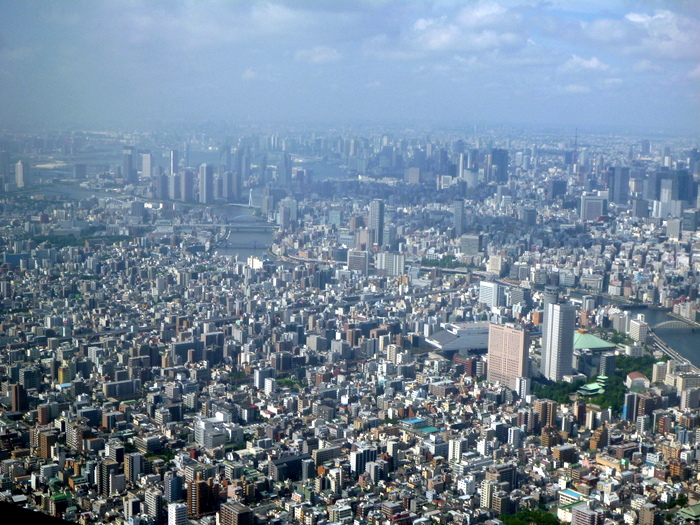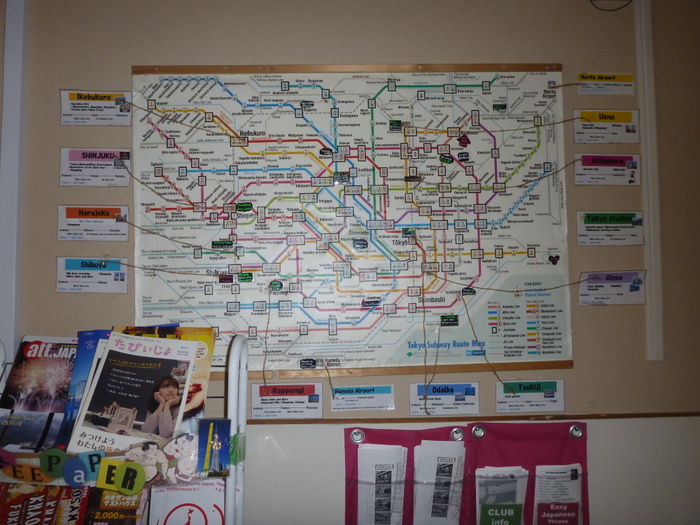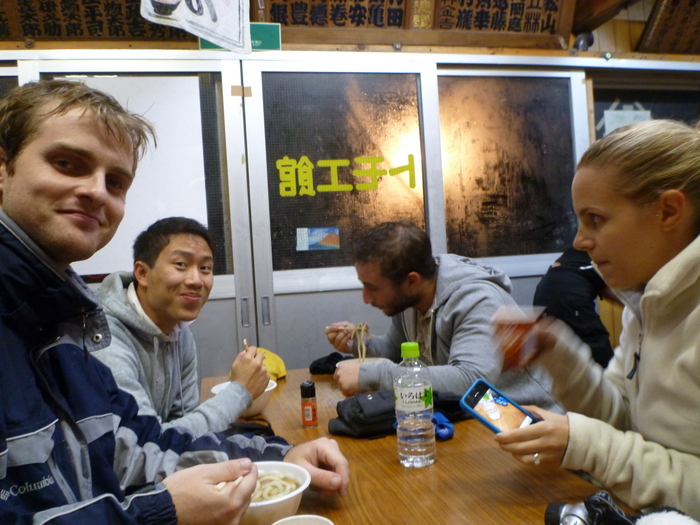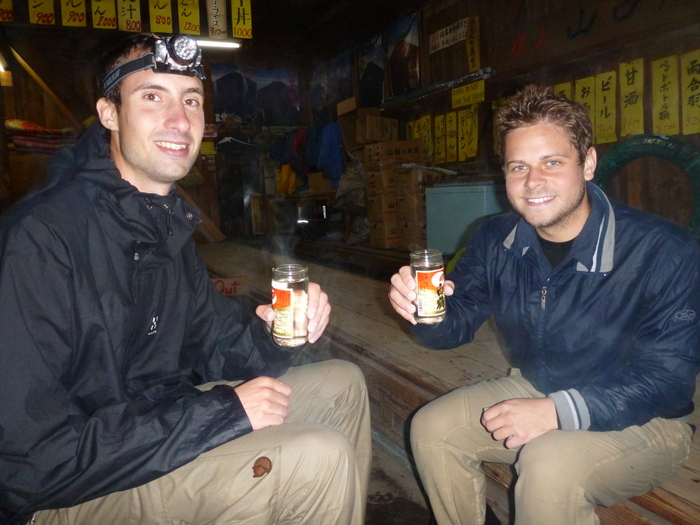I walked off of the plane into a new world in Asia, starting with Japan. This was not the world that I had come to be familiar and comfortable with in South America, where I could communicate effectively in Spanish and navigate the public transit systems.
The first differences I noted before I boarded the plane; there were obvious physical differences in skin color and facial features of the people. Coming off the plan I was reminded that, not only did I not understand any Japanese, but I couldn’t even read the characters. How am I going to get around, read street signs, and interact with people?
It was afternoon when I arrived at Tokyo, Narita airport, and all I had was an address of a hostel that I hadn’t yet booked. I had gotten lazy in South America because hostels were ubiquitous and easy to book same day. I frequently traveled to a new city without knowing where I would sleep that night. I tried the same entering this new world. Though I had to stay at a different hostel, the tactic worked out fine.
Fortunately, finding my way around wasn’t as difficult as I thought. Most of the signs in the airport were also in English. Since I didn’t know how far I was from Tokyo, or how to navigate the transit system, I made my way down to a tourist information center. I was greeted by a smiling Japanese woman. I asked her for a map and how to get to the hostel. She gave me very clear directions and pointed it out on the map.
Tokyo, depending on how you look at it, is the largest, most populous city in the world with 35 million people in the metropolitan area. You can ride subways around for hours and find high rises and giant shopping malls everywhere. What was really striking about Tokyo, however, was the cleanliness, orderliness, and safety. How do the Japanese manage it?
At first, I had trouble understanding what to do in Tokyo and in Japan. South America is full of stunning landscapes and adrenaline filled adventure. I felt lost and even a little let down that I wasn’t experiencing all of this right away.
So the first thing I did was climb Mt. Fuji, the highest mountain in Japan
My attitude towards climbing Fuji started off all wrong. I was cocky, thinking it would be little more than a day hike. After all, I did climb a 5,800m (19,000+ ft) volcano in Arequipa and Fuji was “only” 3776m (12,388ft). Next, I took a gamble on the weather because I didn’t want to schedule my travels around Fuji– I had a 50% chance of rain. Finally, I didn’t really research what I was doing. I figured the hostel was right outside of the mountain – I didn’t leave enough time and had to rush, without resting before the night climb and also forgetting my head lamp.
After getting dropped off at the 5th station at 10pm, I met two guys from the Australia who had head lamps. We decided to climb together. We started off slow and so did the light misty rain. We were enjoying the comfortably cool weather and the easy pace. Shortly after passing station 6 of 9, the rain picked up and it was clear my gamble was not in my favor. We stopped at the 7th station to get some shelter from the rain, hoping it would die down. It didn’t.
With temperatures dropping rapidly with altitude and wind picking up, we continued to the 9th station and stopped again. This time we were completely soaked; ponchos aren’t meant for hours of heavy, windy rain. At the 9th station, our group grew to six as we headed out for the summit.
At this point, the rain was like a hose spraying horizontally in the 30 mph winds. The temperature on the thermometer outside of the station read 0 degrees Celsius. Moving continuously to keep warm became a survival strategy.
800 meters from the summit, wind gusts became so strong we had to get low to the ground to avoid being blown away.
600 meters from the summit, Japanese people were descending, crossing their arms, saying it was too dangerous to summit.
500 meters from the summit, three of our group turned back.
I did not expect Fuji to be this difficult, and it would not have been without the weather. I was seriously questioning here whether I should turn back or keep going. Is it worth the risk? I had conquered Kilimanjaro and multiple volcanoes much higher in South America. I didn’t know when I’d be in Japan again and I knew I would have beaten myself up if I turned around 500m from the summit.
I decided that the wind gusts were the only real danger risk since one big one could blow you off of a rock. Though the gusts were very strong, staying close to the ground felt safe. If the wind really got much worse towards the summit, I could still turn back. I continued on with two others.
300 meters from the summit, my poncho tore from the wind and I had to take it off.
200 meters.
100 meters.
We made it! At the top was another refuge, which gave us some much needed shelter. It would be impossible to dry off, but getting out of the rain and wind for a while was recharging, along with some hot sake!
At the top, I also took a video of the weather conditions. I had to use the restroom, which was outside in the hurricane-like weather. Though I was running, you can see me slow down at one point, not because I’m tired, but because the wind is so strong, it almost stops me in my tracks. Enjoy!
Have you ever entered a place or situation that felt completely foreign to you? What was your experience like? Leave a comment here.





 I'm a travel junkie with an IT background. I backpacked around the world for 14 months creating adventures and learning. On this blog, you'll find stories and money saving travel tips that will help you make your travel dream a reality. Enjoy! Feel free to visit my social networking profiles below or my
I'm a travel junkie with an IT background. I backpacked around the world for 14 months creating adventures and learning. On this blog, you'll find stories and money saving travel tips that will help you make your travel dream a reality. Enjoy! Feel free to visit my social networking profiles below or my 



{ 2 comments… read them below or add one }
Hey! Glad to see you made it. I’m going to be doing Mt. Fuji in future trips to Japan. Love the pics, glad you didn’t freak out when you first got to Tokyo, sounds like you kept a level head.
Have a blast, enjoy the sake (hot/cold), don’t forget to try all the local delicacies, oh and don’t forget to go to Tsukiji Fish Market, believe me you will have a blast and the sashimi is fantastic.
Remember:
Arigato gozaimasu – (formal) ThankYou
Arigato – (non-formal) Thank You
Gomen nasai – I’m sorry
Sumimasen – Excuse me (or Sorry, less formal)
Ja Ne – See you later!
😀
If you need contacts just let me know.
Cheers!
Nice story, I wonder if I would’ve made it to the top….it doesn’t sound so high 🙂 but the weather looks scary!
{ 1 trackback }